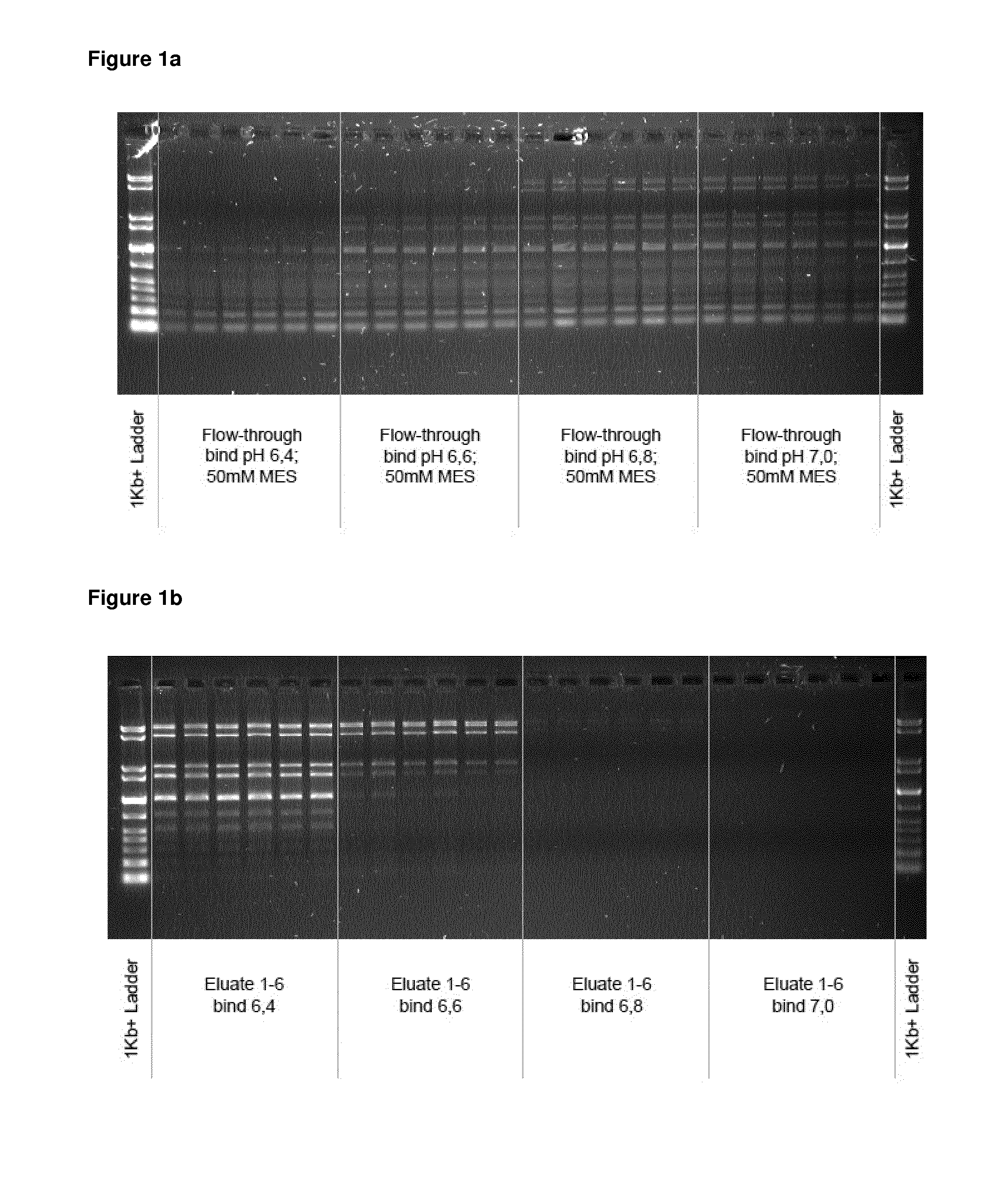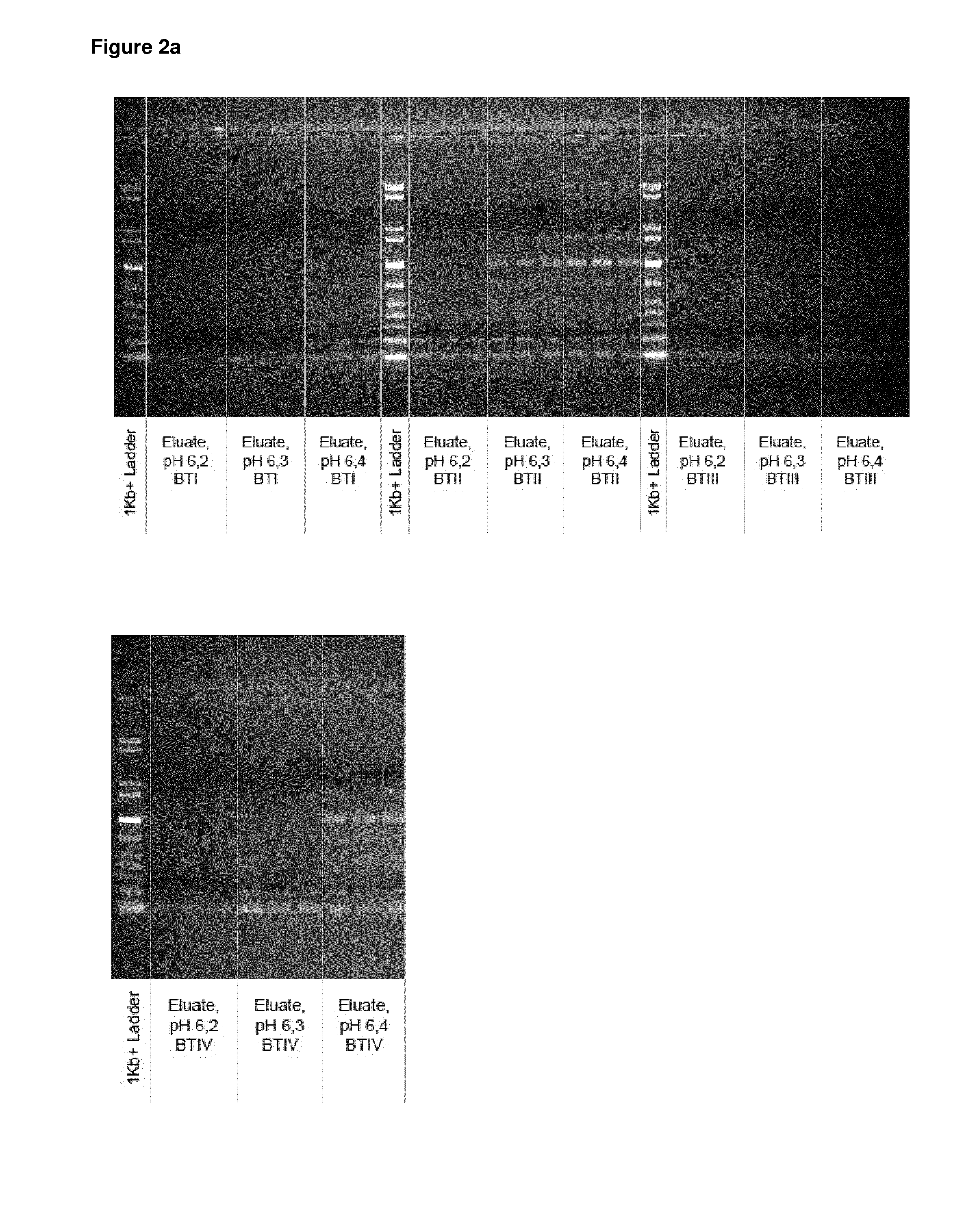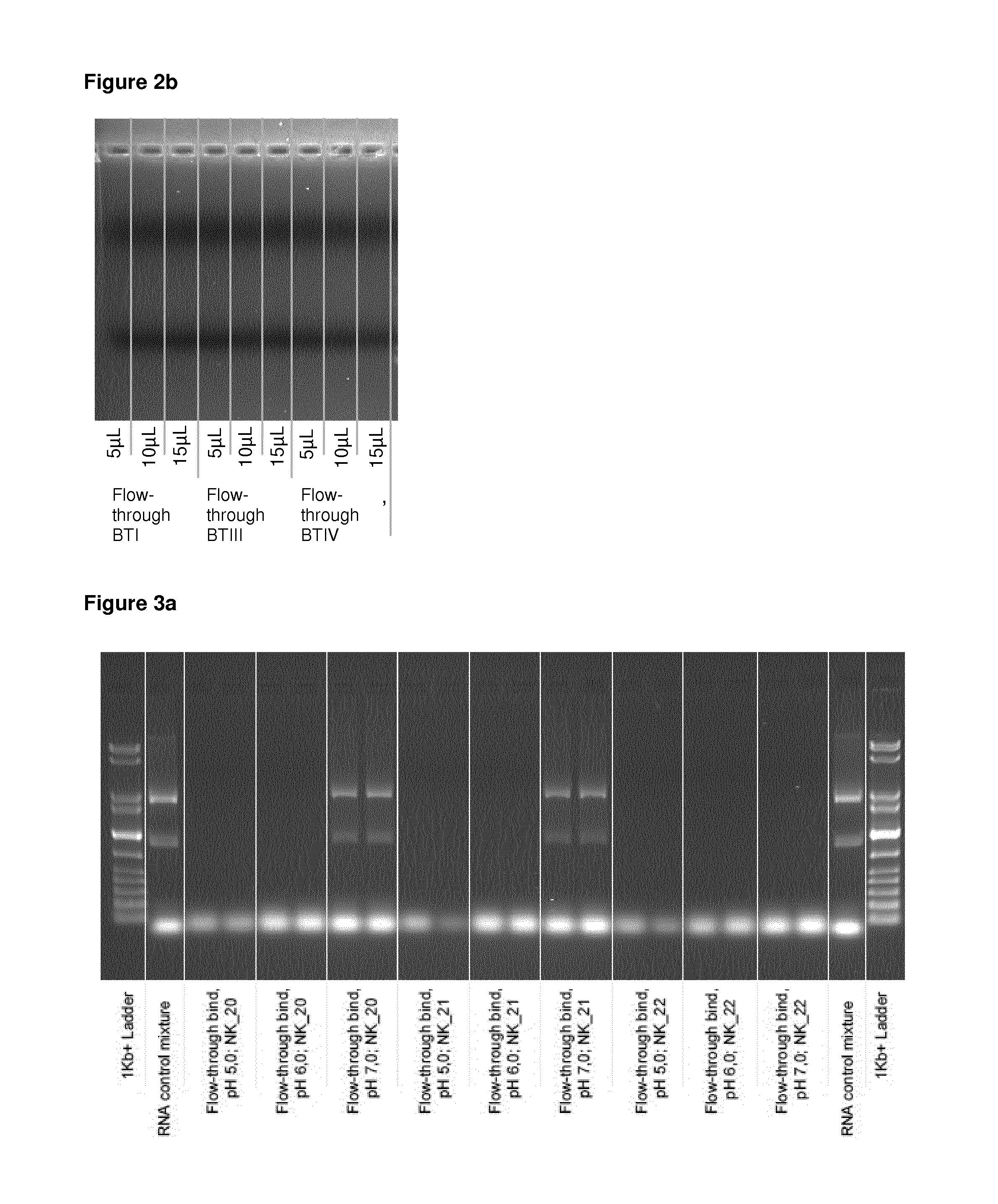Methods for separating nucleic acids by size
a nucleic acid and size technology, applied in the field of molecular biology, can solve the problems of time-consuming and labor-intensive methods, and it is difficult to isolate small nucleic acids such as e.g. extracellular nucleic acids and in particular small rna using respective technologies
- Summary
- Abstract
- Description
- Claims
- Application Information
AI Technical Summary
Benefits of technology
Problems solved by technology
Method used
Image
Examples
example 1
Synthesis of Anion-Exchange-Modified Magnetic Carboxylate Beads
[0102]500 mg magnetic beads (Carboxyl-Adembeads, Ademtech, #02111, or Dynal MyOne Carboxy beads, #65011, Seradyn Sera-Mag Magnetic Carboxylate modified beads, or Seradyn Sera-Mag SpeedBeads) were resuspended in 10 ml 50 mM MES buffer, pH6.1. Then, 11.5 ml of a 50 mg / ml solution of N-hydroxysulfosuccinimide (NHS) were added and the solution was mixed with a mini-shaker. Then, 10 ml of a 52 μmol / l solution of 1-ethyl-3-(3-dimethylaminopropyl)carbodiimide (EDC) were added, followed by another mixing step. The reaction mixture was incubated for 30 min on a rotating end-over end shaker. The magnetic beads were separated with a magnet and the supernatant was removed. The beads were resuspended in 50 ml 50 mM MES buffer, pH6.1 and distributed to 5 aliquots of 10 ml each. The beads were separated with a magnet and the supernatants were removed. In each aliquot the beads were resuspended in 1 ml 50 mM MES buffer, pH 6.1. Each ali...
example 2
Synthesis of Polyethylene Imine-Modified Magnetic Carboxylate Beads
[0103]500 mg magnetic beads (Estapor, #39 432 084) were resuspended in 10 ml 50 mM MES buffer, pH6.1. Then, 11.5 ml of a 50 mg / ml solution of N-hydroxysulfosuccinimide (NHS) were added and the solution was mixed with a mini-shaker. Then, 10 ml of a 52 μmol / l solution of 1-ethyl-3-(3-dimethylaminopropyl)carbodiimide (EDC) were added, followed by another mixing step. The reaction mixture was incubated for 30 min on a rotating end-over end shaker. The magnetic beads were separated with a magnet and the supernatant was removed. The beads were resuspended in 50 ml 50 mM MES buffer, pH6.1 and distributed to 5 aliquots of 10 ml each. The beads were separated with a magnet and the supernatants were removed. In each aliquot the beads were resuspended in 1 ml 50 mM MES buffer, pH 6.1. Each aliquot was supplemented with 2 ml polyethylene imine (SAF, #408727) at a concentration of 500 mg / ml in 50 mM MES buffer, pH8.5. The ingred...
example 3
Size Fractionation of DNA Fragments by Selective Binding
[0104]5 μl of a suspension comprising 0.13 mg of spermine-coated polymeric beads (synthesized according to example 1 with Seradyn SeraMag carboxy beads, amine coupling at pH 8.5) were mixed with 9 μl of a DNA-size standard (GelPilot 1 kb Plus Ladder 100 bp-10 kbp, Qiagen #239095) and 100 μl of a binding buffer (50 mM MES, pH 6.4, pH 6.6, pH 6.8 or 7.0 Samples were briefly mixed by vortexing and incubated for 1 min. Then, beads were separated with a magnet, and the supernatants were transferred to fresh tubes. Beads with bound DNA were washed with 100 μl deionized water, the beads were separated with a magnet and the supernatant was discarded. The washing step was repeated one more time, and the supernatant was discarded. The beads were resuspended in 50 μl elution buffer, briefly mixed by vortexing and incubated for 1 min. Then, the beads were separated with the magnet and the eluates were transferred to fresh tubes. For each b...
PUM
| Property | Measurement | Unit |
|---|---|---|
| pKa | aaaaa | aaaaa |
| pKa | aaaaa | aaaaa |
| pKa | aaaaa | aaaaa |
Abstract
Description
Claims
Application Information
 Login to View More
Login to View More - R&D
- Intellectual Property
- Life Sciences
- Materials
- Tech Scout
- Unparalleled Data Quality
- Higher Quality Content
- 60% Fewer Hallucinations
Browse by: Latest US Patents, China's latest patents, Technical Efficacy Thesaurus, Application Domain, Technology Topic, Popular Technical Reports.
© 2025 PatSnap. All rights reserved.Legal|Privacy policy|Modern Slavery Act Transparency Statement|Sitemap|About US| Contact US: help@patsnap.com



